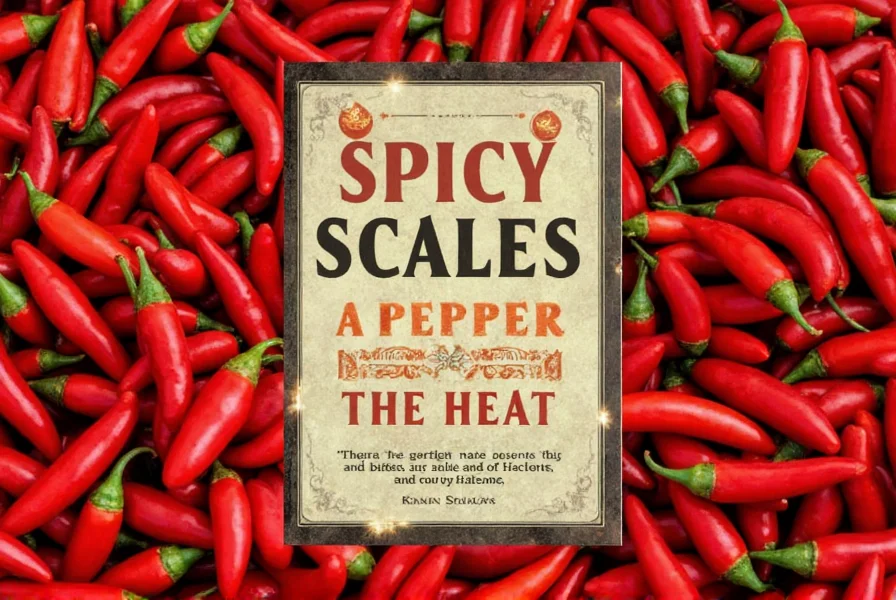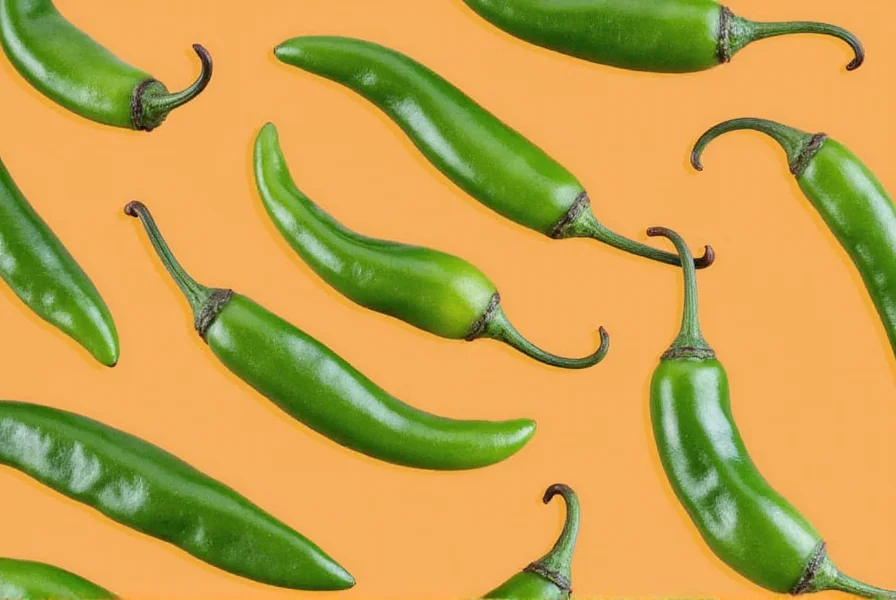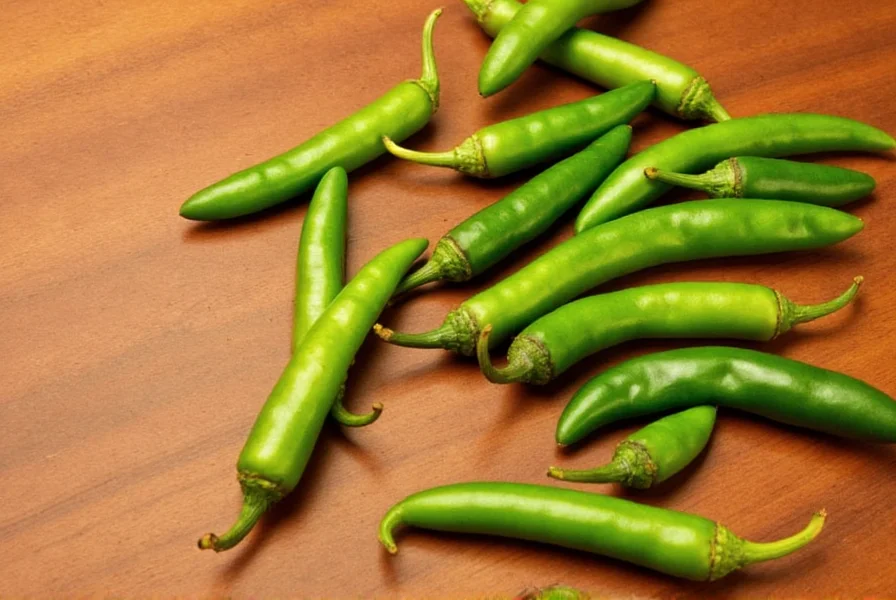Serrano chilies are versatile peppers perfect for adding vibrant heat and flavor to dishes. Here's how to use them effectively in your cooking: Add raw to salsas for a crisp bite, roast for smoky depth, blend into sauces, or pickle for tangy preservation. Start with one pepper and adjust based on taste, always wear gloves when handling, and remove seeds for milder heat. Balance spice with acid or fat for perfect flavor harmony.
| Pepper | Scoville Heat Units (SHU) | Flavor Profile |
|---|---|---|
| Bell Pepper | 0 SHU | Sweet, vegetal |
| Jalapeño | 2,500–8,000 SHU | Fruity, earthy |
| Serrano | 10,000–23,000 SHU | Crisp, bright, slightly citrusy |
| Habanero | 100,000–350,000 SHU | Tropical, floral, super spicy |

5 Detailed Serrano Chili Recipes
- Simple Salsa Verde: Roast 4 serranos, 1 lb tomatillos, 1/2 onion, and 2 garlic cloves. Blend with 1/4 cup cilantro, 2 tbsp lime juice, and salt. Perfect for tacos or eggs.
- Serrano-Lime Crema: Blend 2 roasted serranos, 1 cup sour cream, 1 tbsp honey, 1 tsp lime zest, and salt. Ideal for grilled corn or fish.
- Pickled Serranos: Slice 10 serranos. Simmer 1 cup vinegar, 1/2 cup water, 2 tbsp sugar, and 1 tsp salt. Pour over peppers. Store for 2 weeks. Great on burgers or sandwiches.
- Spicy Guacamole: Mash 3 avocados with 1 diced serrano (seeds removed), 1/4 cup onion, 2 tbsp cilantro, 1 lime juice, and salt. Serve with chips.
- Serrano Pepper Jelly: Cook 2 cups chopped serranos, 1 cup apple cider vinegar, 1 cup sugar, and 1 packet pectin. Simmer until thick. Perfect for cheese boards.
Buying Guide: Picking the Perfect Serrano
| Color | Flavor Notes | Best Uses |
|---|---|---|
| Green | Grassy, clean, slightly bitter | Fresh salsas, salads, ceviche |
| Red | More mature, fruitier, slightly sweeter | Roasted sauces, stews, marinades |
| Orange/Brown | Very ripe, intense heat and deeper flavor | Spicy pastes, hot sauces, moles |
Storing and Preserving Serranos
- Refrigerator: Store unwashed serranos in a plastic bag in the crisper drawer for up to two weeks.
- Freezer: Freeze whole, uncut serranos in a zip-top bag for up to six months. No need to thaw before use.
- Dried: Dehydrate until brittle for powder or rehydration.
- Oil-packed: Preserve chopped serranos in olive oil with garlic and herbs for pasta or pizza topping.

Serrano vs Jalapeño: Key Differences
| Feature | Serrano Chili | Jalapeño |
|---|---|---|
| Origin | Mexico (mountain regions) | Mexico (Veracruz, Jalisco) |
| Size | 1–4 inches long | 2–6 inches long |
| Heat Level | 10,000–23,000 SHU | 2,500–8,000 SHU |
| Flavor | Crisp, bright, citrusy | Earthy, fruity, slightly smoky |
| Best Used In | Salsas, sauces, roasts, pickles | Stuffed, grilled, smoked, canned (chipotles) |

Frequently Asked Questions
Is it "serrano" or "serano" chilies?
The correct spelling is "serrano" (with double "r"). It's named after the mountainous regions of Mexico (sierras).
How hot are serrano chilies compared to other peppers?
Serrano chilies range from 10,000 to 23,000 Scoville Heat Units (SHU), making them about 2-3 times hotter than jalapeños but significantly milder than habaneros.
Can I substitute serrano peppers for jalapeños in recipes?
Yes, but use half the amount for serranos since they're hotter. Serranos have a brighter, citrusy flavor while jalapeños are fruitier and earthier.
How can I reduce the heat of serrano chilies when cooking?
Remove seeds and membranes, rinse under cold water, and balance with dairy, acid, or fats. Cooking doesn't reduce heat—capsaicin is stable when heated.
What safety precautions should I take when handling serrano chilies?
Always wear gloves when handling. Capsaicin can cause skin and eye irritation. Wash hands thoroughly after handling, even with gloves.
How long do serrano chilies last, and what's the best way to store them?
Fresh serranos last 2 weeks refrigerated. Freeze whole for 6 months, dry for powder, or pickle for tangy flavor preservation.










 浙公网安备
33010002000092号
浙公网安备
33010002000092号 浙B2-20120091-4
浙B2-20120091-4